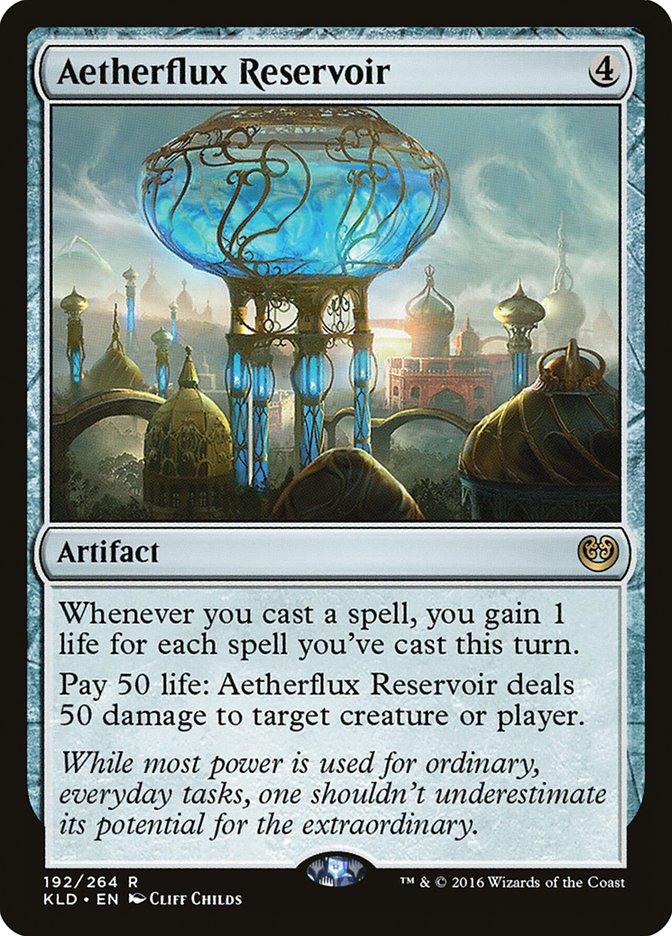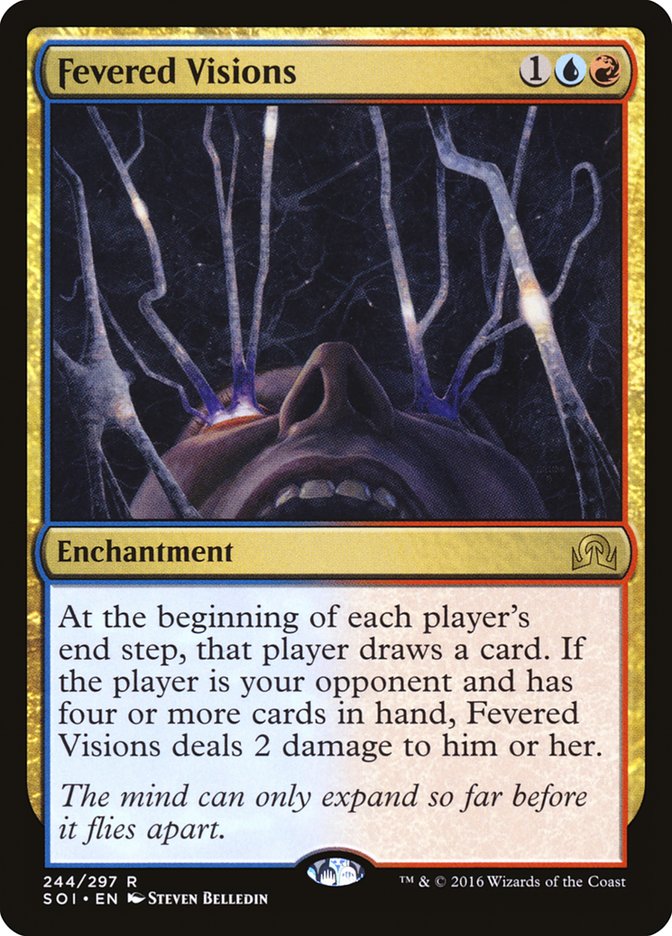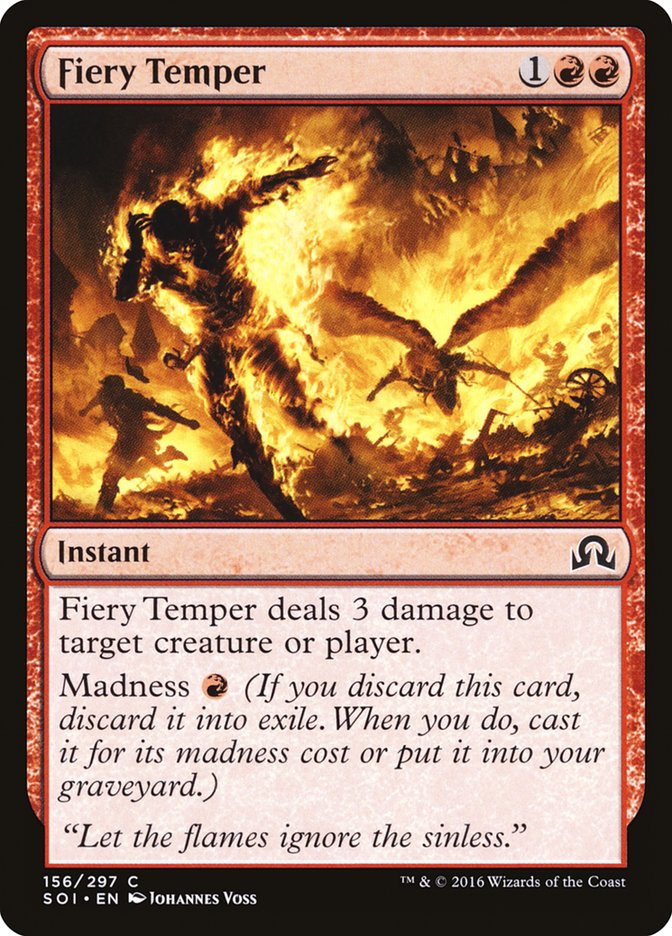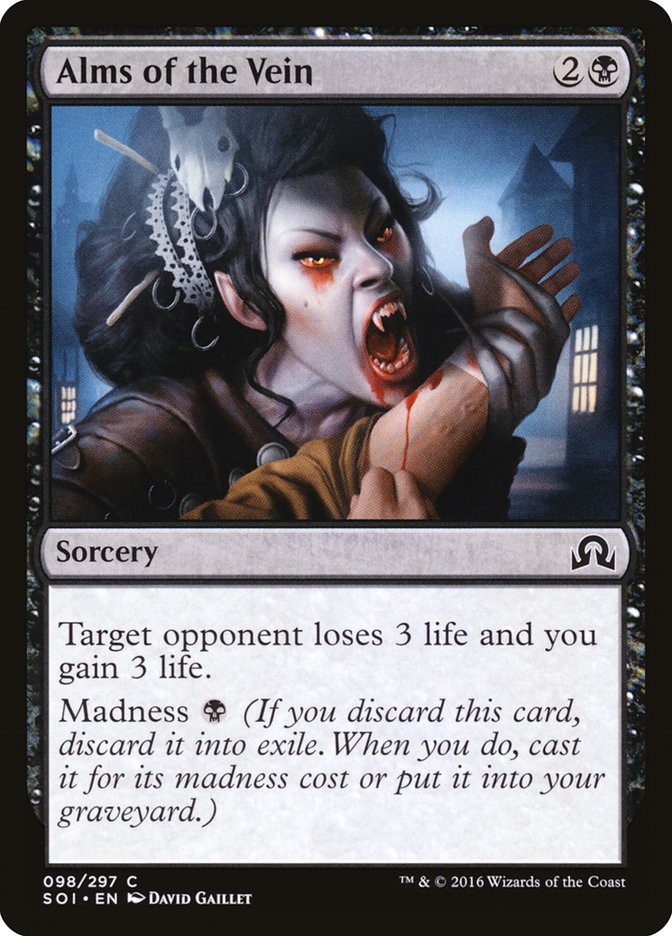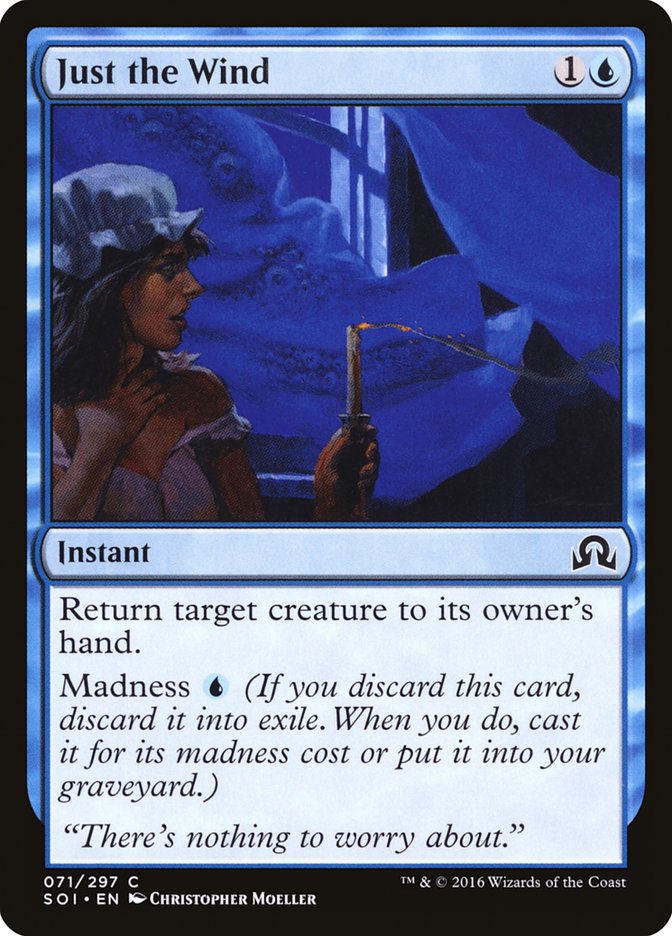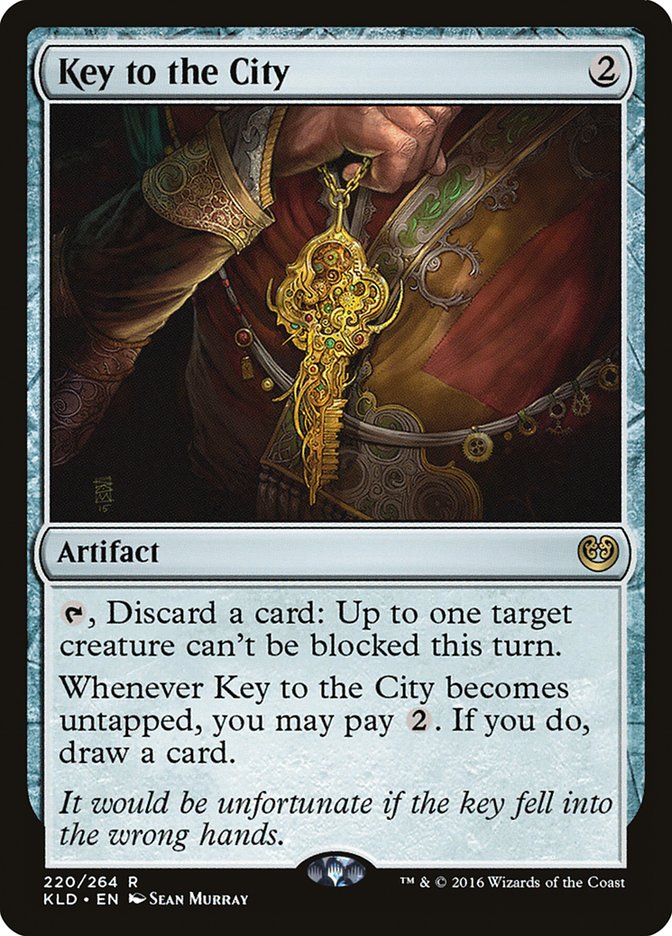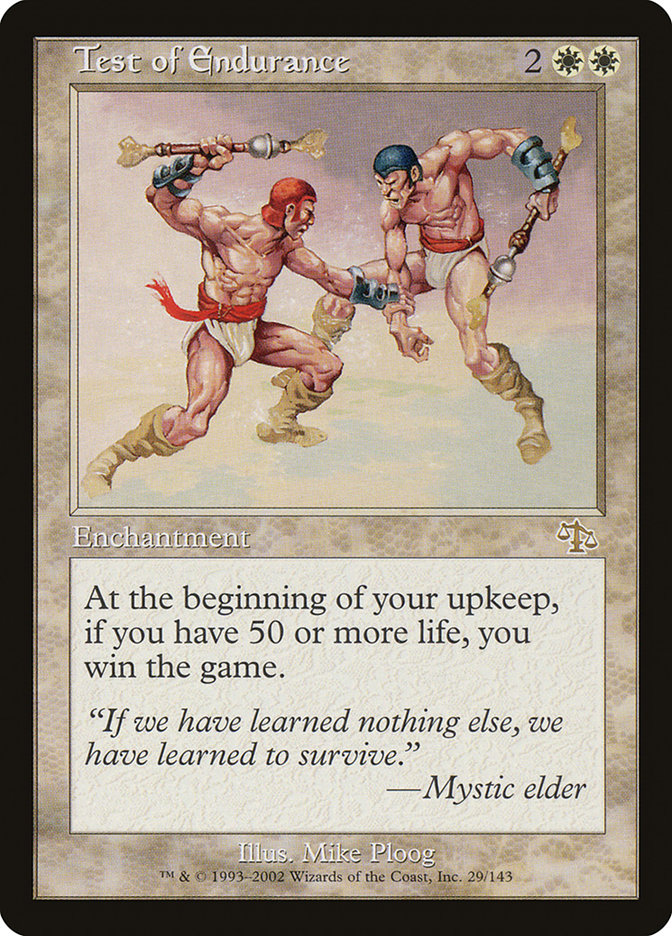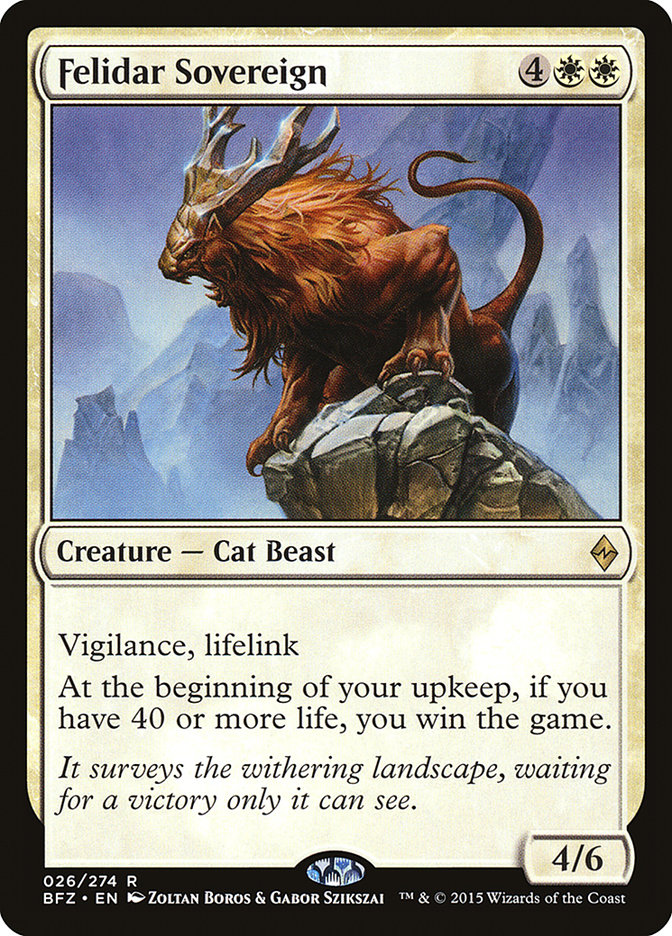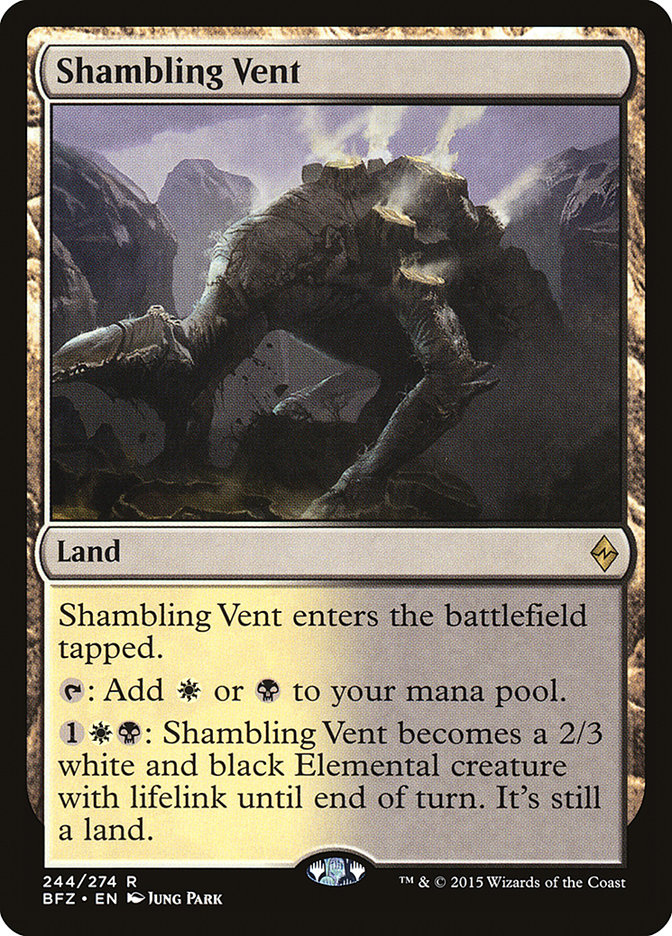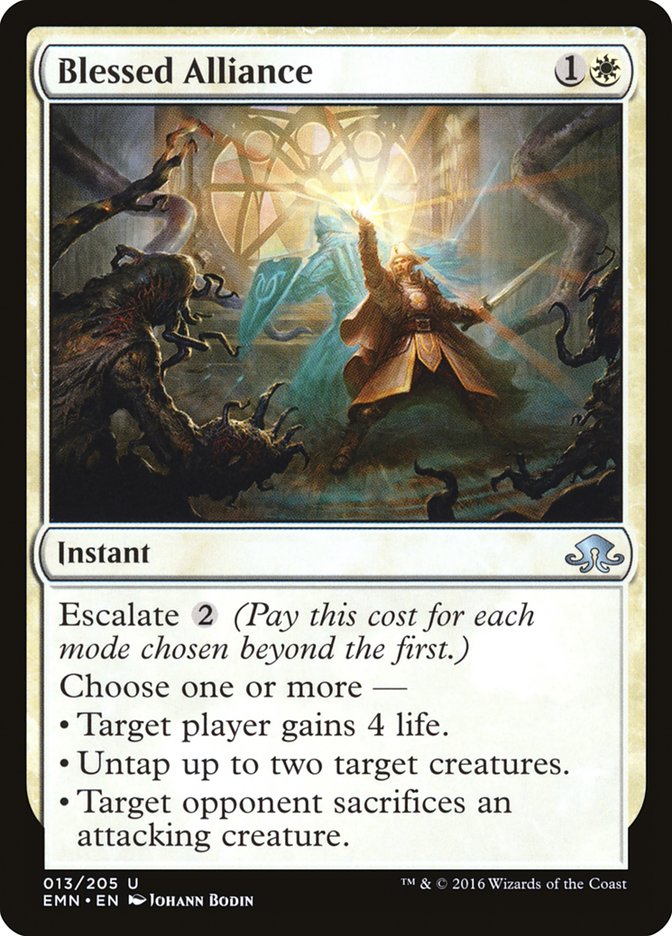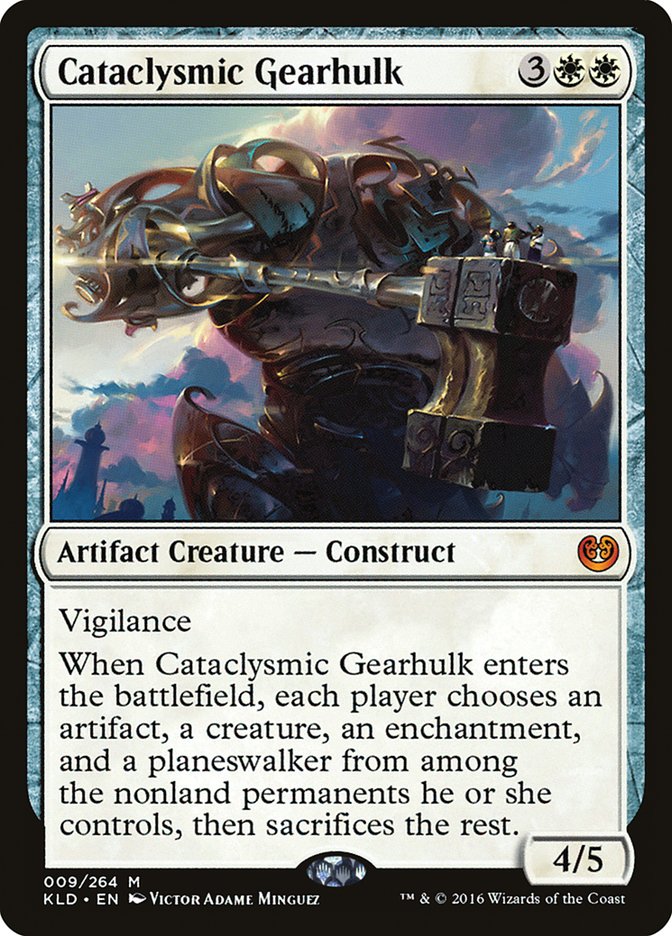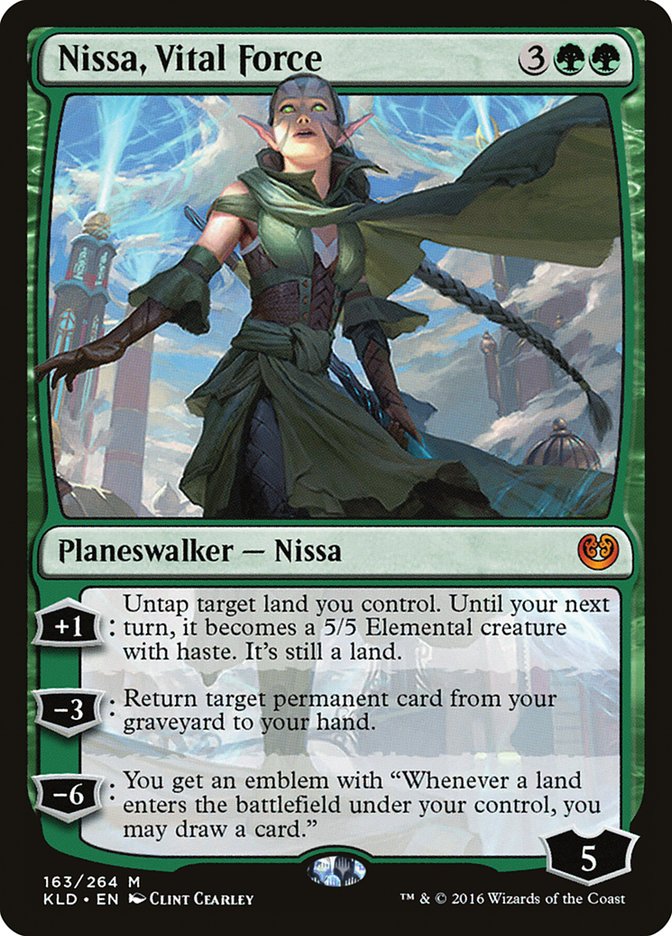The Armillary Sphere is spinning, the Ghirapur Orrery is fired up, and the beautiful, intricate gears of Kaladesh are spinning up as we speak, and we’re just a day away from having the full set revealed! Each day up to now has contained a workshop full of exciting artifacts, Energy producers, and powerful planeswalkers and game-enders, and we’re on the edge of knowing exactly what cards we’ll be using in the upcoming Standard.
Leaving the old Standard behind also means leaving some of its most powerful and controversial cards behind, too.
Well, anymore, this is only that one still draws both intense praise and ferocious ire.
I’ll be glad to see it go, just because I always like to see the top dog retire, giving way to brewing and experimentation at all levels of the game. Collected Company was a particularly rough ride for many Standard-goers, but enough about the past. Kaladesh is all about the future!
Last week, I only had enough previews to create a thematic Vehicle deck, and it’s already quickly been put out of date thanks to new vehicles like Cultivator’s Caravan and Smuggler’s Copter. Now, though, I think we have enough to talk about, and build, two decks surrounding one of the most flavorful and enticing cards of the set: Aetherflux Reservoir.
In my pen-and-paper notes during deckbuilding, I’ve written it as “Aetherflux Capacitor,” and I’ve got to be honest, I’m probably going to call it that from back then to the future.
This wild artifact has two important components: lifegain and a win condition. In several attempts to leverage it heavily as both, I have found only sporadic success, so I decided to approach these decks in such a way that each promotes one of those modes. A better deckbuilder than myself might very well come along and successfully integrate the two, and I welcome your attempts in the comments!
The first mode is the first time we’ve seen “for each spell cast this turn” in a Standard set since Planar Chaos, over a decade ago.Storm effects, like those found on Grapeshot, Tendrils of Agony, and Mind’s Desire, have been historically powerful thanks to their ability to scale quickly, avoid most countermagic, and have built-in win conditions. Arbitrarily increasing the spell count each turn using zero-cost spells and artifacts make storm effects far too powerful for Standard, so we won’t see anything like that for a long time, if ever again, but Aetherflux Reservoir’s effect maintains this lineage in a tame, manageable way.
So, focusing on the first part, let’s think about casting lots of spells each turn to keep our life total healthy, allowing us to ignore our enemy’s plan and win through other means or, as it might happen, through dealing 50 damage to your opponent’s face.
To be able to cast multiple spells a turn, you either need to reduce the cost of inherently powerful spells or draw lots of cards each turn.
Let’s see, how can we draw lots of cards every turn? Let me just pull out my little black book.
Sigh. I just can’t seem to quit you.
So that’s got our extra draw power, so let’s look at cost reduction. Luckily for us, Shadows over Innistrad introduced some incredibly efficient spells, with the small caveat that they must be discarded to reap the benefits.
If we pursue a burn-oriented route, we get lots of these like-minded instants and sorceries. Pursuing the madness route keeps the cost down. What else can we do to bolster our draw and discard ability?
This little number was revealed last week, from my point of view, and it’s probably my favorite madness enabler to date. I could write a whole article about how great I think this card is in Mono-Red Aggro, putting Senseless Rage on an Inventor’s Apprentice and smashing for four unblockable damage on turn 3, and further giving the deck a powerful, albeit a bit slow, draw filter later in the game. Here, however, it’s a no-cost madness enabler that, when needed, can provide essential card draw. Fevered Visions decks can, on occasion, just flat run out of gas, so having another spell to help stymie that possibility is where I want to be. Free enablers have already existed, but they’ve otherwise underwhelming (see Ravenous Bloodseeker), so having a hard-to-target artifact on top of everything else is truly ideal.
So let’s slap all that together and come up with a sweet way to draw cards, cast spells, and gain life!
Creatures (4)
Planeswalkers (4)
Lands (22)
Spells (30)

This deck is no-frills, straightforward, and all about maximum fun. Most of these cards, even the new ones, are known quantities, so I’m more inclined to discuss how this deck plays.
I shared a similar Grixis Madness list several months ago, and this plays more smoothly than that one, thanks in very large part to the planeswalkers and Key to the City. Chandra, Torch of Defiance has an added benefit, being able to produce two mana with her second +1 ability, negating the cost of a Key to the City draw trigger or pushing an Avacyn’s Judgment through the roof. The deck scales very nicely, doing just as well on turn 2 as on turn 10. The deck doesn’t need Fevered Visions, though it does help, which means the deck remains flexible enough to change out its parts ad hoc as the matchup merits.
Pretty good first run, but I wanted to gain more life than I was gaining to reach the second mode. The first deck never really got me far above twenty following incidental damage through combat. It was time to win with life.
Winning with lifegain has been a win condition since Judgment, and one that’s occurred at many kitchen tables around the world since. Yeah, you know who I’m talking about; back then it used to be the mono-white pillow fort Cleric player, but now they use cards that go by other names like Oloro, Ageless Ascetic. Players, especially casual and Commander players, love gaining life, so executing a one-sided game of lifegain is a surefire to get many of these folks onboard, and I’m among them.
There’s another way we can win through lifegain, and it’s even legal in this format.
White is no stranger to life total padding, and here, it functions as a redundant win condition that can be more easily searched for and resurrected despite being easier to target and kill. Instead of filling a deck with Chaplain’s Blessing and a mess of lifelinkers, though, we have to approach this differently. Aetherflux Reservoir requires you take no damage. Moreover, you also have to gain 30 life in the meantime. Any damage you take you’ll have to make up, so we have to make sure we’re not on the losing side of that exchange.
Lifelink isn’t a great plan, mostly because if you can gain 30 life through lifelink, you could have probably dealt them 30 damage, and they’d be dead anyway. No, we need to make a defensive deck that gives us the opportunity to stop our opponents cold, pressure them enough to gain life, and then close the game with an Aetherflux Reservoir activation.
For this, we turn to the three colors most associated with lifegain: white, black, and green.
We want to incidentally gain life as part of our normal course of business, e.g. killing creatures, pressuring the battlefield, and dealing combat damage. To do this, we need to make sure that nearly everything in our deck and, as a side job, gains us some life while we do it. Our slightly less powerful cards will be compensating our life total so that, once we hit 50, we can make a large withdrawal.
This kind of deck might look a little more good stuff, midrange-y, and you’re right; it is. If we want to make a successful deck that provides an inevitable end game, we need to get there. Moreover, it provides an opportunity to try some of Kaladesh’s best cards.
Creatures (21)
- 1 Felidar Sovereign
- 3 Jaddi Offshoot
- 1 Ayli, Eternal Pilgrim
- 4 Sylvan Advocate
- 1 Emrakul, the Promised End
- 1 Lone Rider
- 3 Primal Druid
- 4 Filigree Familiar
- 3 Cataclysmic Gearhulk
Planeswalkers (4)
Lands (23)
Spells (12)

So let’s break this deck down a bit.
On the creature side, we have conflicting gameplans to an extent. Sylvan Advocate is meant to stick around and punch through opponent’s defenses, but at the same time we have highly defensive creatures like Jaddi Offshoot. Primal Druid and Filigree Familiar like to die rather than put pressure on, though, so what gives?
This gives.
Many of these creatures encourage overcommitment to the battlefield to get past them. A 2/1 isn’t getting past a 0/3 without some expenditure on your opponent’s side. A 2/2 trading for one of their aggressive creatures encourages them to replace a creature and up the pressure. Once everything is in place, Cataclysmic Gearhulk brings everything to a grinding halt. Depending on what you need, you can select Cataclysmic Gearhulk as an artifact, a creature, or both, allowing you to sacrifice everything else, including those things that do something nice for you when they die. On top of that, it’s as large as a full-strength Sylvan Advocate, so you’ve added a lot of pressure to the battlefield and wrecked your opponent’s plans. It’s not quite a Tragic Arrogance on a stick thanks to its wording (the opponent chooses for themselves), but this is pretty close, and in a lot of battlefield states, it won’t matter; just getting it clean will be enough.
In the spell category, Traverse the Ulvenwald helps fix color as well as provide a means to either find the Cataclysmic Gearhulk you always dreamed of or the Felidar Sovereign once you’ve reached 40 life. Delirium is easy thanks to the deck’s seven artifact creatures and representation of every card type, which helps us get to Emrakul, the Promised End, and why the heck not? Slam your opponent’s team into your activated, large Shambling Vents for those points of life to activate your Reservoir. Pulse of Murasa and Blessed Alliance give us lifegain and utility for the quick boost or the long haul.
This might really be the diamond in the rough, though; it’s way better than it leads on, and I’ve been very pleased with the new Nissa in testing. She lets you untap to cast Ulvenwald, ramp for the turn, or make a huge attacker with her +1. Sorin, Grim Nemesis does gain you life, but he also acts as a third way to leverage your life total into a win condition with his ultimate.
Altogether, this deck played extremely well, with Blessed Alliance, Cataclysmic Gearhulk, and Nissa, Vital Force being the all-stars. Together, this Gearhulk and this planeswalker may prove to be the strongest sleepers in the set. Either way, they support the Aetherflux Reservoir in subtle, yet powerful ways.
Chances are there’s a way to somehow combine the best of both of Aetherflux Reservoir’s faces, but I’m struggling to find it. What about you? How are you filling your reservoir?



